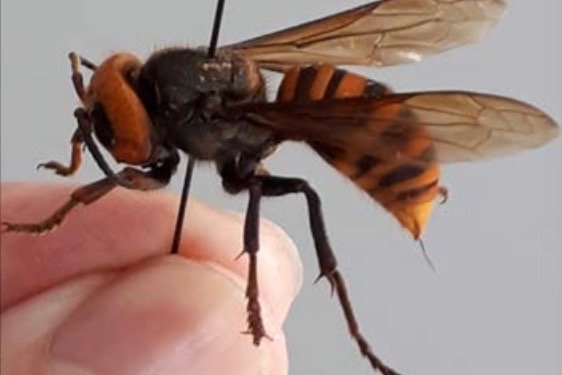London | Thomson Reuters Foundation — Honeybees are attracted to a fungicide used in agriculture with “unsettling implications” for global food production, a U.S. scientist said on Tuesday.
Tests carried out by a team from the University of Illinois showed bees preferred to collect sugar syrup laced with the fungicide chlorothalonil over sugar syrup alone.
The finding follows other studies linking fungicides to a worldwide plunge in honeybee and wild bee populations which are crucial for pollinating crops.
Read Also

U.S. livestock: CME cattle futures rise on expectations of tight supplies
Chicago | Reuters – Chicago Mercantile Exchange cattle futures climbed on Wednesday as market players anticipated tighter cattle supplies in…
“Bees are kind of like humans in that they sometimes like things that aren’t necessarily good for them,” said University of Illinois entomology professor May Berenbaum, who led the research.
She said fungicides were bad news for bees because they could exacerbate the toxicity of pesticides and kill off beneficial fungi in hives.
Her team set up two feeding stations in an enclosure allowing the bees to choose sugar syrup laced with a test chemical or without. The chemicals included three fungicides and two herbicides at various concentrations.
The researchers were taken aback to find the bees choosing one of the fungicides.
Chlorothalonil, sold under various brand names including Syngenta’s Bravo, is registered in Canada for disease control in various pulse, fruit and vegetable crops and in wheat.
“It was a surprise when they actually liked them,” Berenbaum told the Thomson Reuters Foundation by phone, adding that it could explain why fungicide contamination in hives was so common.
“This is not anything that anyone had even thought about before so we need to readjust our focus because there certainly could be implications for agriculture…”
However, she said the bees actively avoided a second tested fungicide and were neutral about a third.
The scientists said the findings were “worrisome” in light of research showing fungicides interfere with honey bees’ ability to metabolize pesticides used by beekeepers to kill parasitic mites that infest their hives.
The scientists were also surprised to find the bees showed a taste for the widely used herbicide glyphosate.
A study by the Center for Biological Diversity last year said hundreds of native bee species in North America and Hawaii were sliding towards extinction.
It said bees provided more than US$3 billion in fruit-pollination services each year in the U.S.
Experts have blamed habitat loss, heavy pesticide use, climate change and increasing urbanization for declining numbers.
The United Nations recently announced an annual World Bee Day on May 20 to raise awareness of their importance and declining numbers.
— Reporting by Emma Batha for the Thomson Reuters Foundation, the charitable arm of Thomson Reuters, which covers humanitarian news, women’s rights, trafficking, corruption and climate change. Includes files from AGCanada.com Network staff.
















